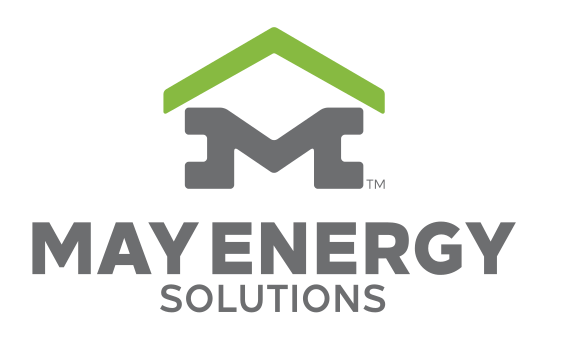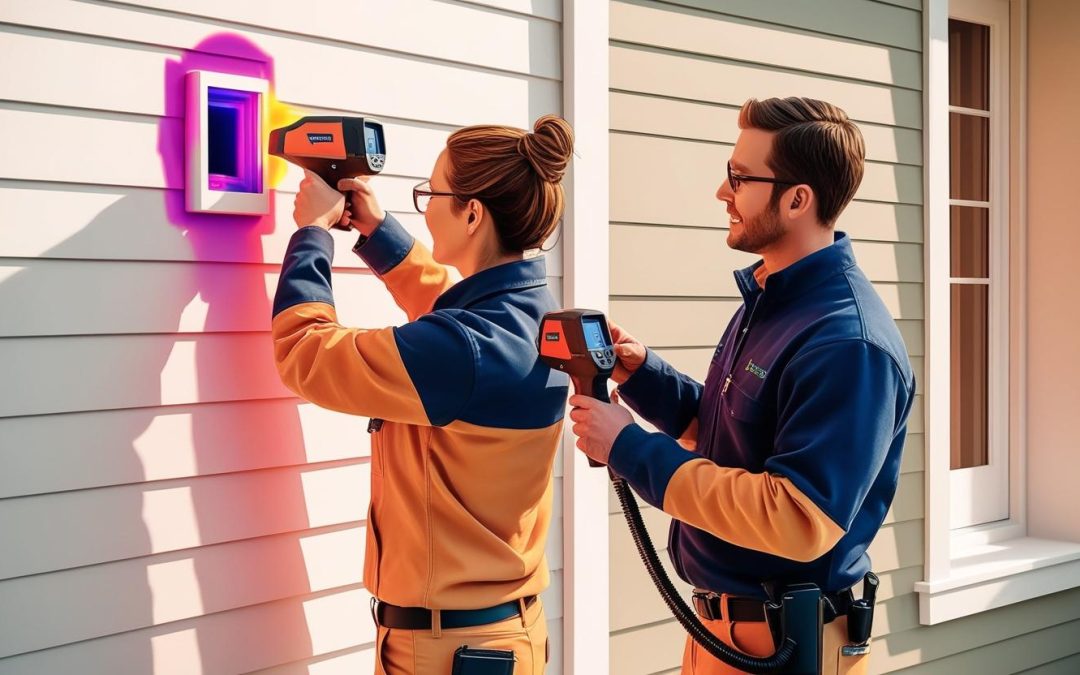Planning to insulate your home to cut energy costs? Hold on! Before rolling out fiberglass or spray foam, there’s a crucial step you shouldn’t skip: a home energy evaluation. This professional assessment identifies air leaks, moisture issues, and HVAC inefficiencies—ensuring insulation actually improves comfort and lowers energy bills.
According to the U.S. Department of Energy, up to 30% of a home’s energy is lost through air leaks. Insulation alone won’t fix this if those gaps aren’t sealed first. Hence, it is important to understand the various aspects and benefits of a home energy audit.
In this blog, we have detailed all these aspects and key reasons why a home energy evaluation should be your first step before any insulation project. Read on!
Key Reasons Why A Home Energy Evaluation Is Essential Before Insulating
Identifies Air Leaks & Drafts
Before adding insulation, it’s crucial to pinpoint where air is escaping in your home. A home energy evaluation uses specialized tools like blower door tests and thermal imaging to detect hidden air leaks and drafts that may be reducing your home’s energy efficiency. If these leaks aren’t addressed before insulation is installed, warm or cool air can still seep in and out, making your insulation less effective. As part of the evaluation, air sealing these leaks is recommended to prevent unwanted airflow and ensure that insulation performs at its best. Without this step, you could end up with a well-insulated home that still suffers from drafts and temperature fluctuations.
Determines the Right Type & Amount of Insulation
Not all insulation is the same, and choosing the wrong type or applying too little (or too much) can lead to poor performance. A home energy evaluation assesses factors such as your home’s climate, existing insulation levels, and specific problem areas to recommend the best insulation type—whether it’s:
- Fiberglass Batt Insulation – Commonly used in walls, attics, and floors, offering a cost-effective solution with decent thermal resistance.
- Spray Foam Insulation – Expands to fill gaps and air leaks, providing superior sealing and high R-value, ideal for attics, crawl spaces, and irregular areas.
- Blown-In Cellulose Insulation – Made from recycled materials, excellent for retrofitting attics and wall cavities due to its ability to conform to spaces.
- Rigid Foam Board Insulation – Offers high insulating value per inch and is often used for basement walls, exterior sheathing, and foundation insulation.
- Reflective or Radiant Barrier Insulation – This works well in hot climates by reflecting heat away from the home, often installed in attics.
In some cases, old or damaged insulation may need to be removed before new insulation is installed. A home energy evaluation helps determine if insulation removals are necessary due to moisture damage, pest infestations, or outdated materials that no longer provide adequate thermal protection. It also specifies the proper insulation thickness (R-value) needed for optimal energy savings. If insulation is too thin, it won’t effectively regulate indoor temperatures, leading to energy loss. Over-insulating can trap moisture, causing mold and structural damage. By getting precise recommendations through an evaluation, homeowners can ensure their insulation investment is both effective and long-lasting.
Improved Home Value
Homes with strong energy efficiency features, including proper insulation, are more attractive to buyers and can even command higher prices in the real estate market. However, simply adding insulation without documented proof of its effectiveness won’t have the same impact. A home energy evaluation provides an official report of your home’s energy performance, which can be used as evidence of energy-efficient improvements when selling your home. Buyers are often willing to pay more for a home with lower utility costs, and some lenders even offer better mortgage rates for energy-efficient homes.
Promote Your Overall Safety
Adding insulation affects the way air moves through your home, and if not done correctly, it can create unintended safety hazards. For instance, sealing air leaks without proper ventilation can lead to a buildup of carbon monoxide from gas appliances. Likewise, moisture trapped inside walls due to improper insulation can encourage mold growth, leading to health risks. A home energy evaluation includes an assessment of ventilation and indoor air quality to ensure that insulation enhances safety rather than creating new problems. By identifying potential hazards early, homeowners can take necessary precautions—such as improving ventilation or upgrading outdated appliances—before sealing up the home with insulation.
Qualifies For Rebates And Incentives
Many governments and energy providers offer rebates for insulation and other energy-efficient upgrades, but these programs often require a home energy evaluation to qualify. The evaluation establishes a baseline of your home’s energy performance, which can then be compared to post-upgrade results to measure improvements. Without an evaluation, you might miss out on valuable financial incentives that could significantly reduce the cost of your insulation project. Also, some energy audits provide personalized recommendations that align with rebate programs, helping you maximize your savings while making the most effective improvements.
Identifies HVAC System Inefficiencies
Insulation alone won’t solve all energy efficiency issues. Sometimes, high energy bills or uncomfortable indoor temperatures are caused by other factors, such as old windows, inefficient HVAC systems, or leaky ductwork. A home energy evaluation provides a full picture of your home’s energy performance, identifying weak spots that may need attention beyond insulation. For example, if an assessment finds that air is leaking through poorly sealed doors and windows, simply adding insulation won’t fix the problem—sealing those leaks will. By addressing these hidden inefficiencies before insulating, homeowners can ensure that their investment leads to the best possible results.
Wrapping Up
With the points mentioned above, it’s clear that a home energy evaluation is a crucial first step before any insulation project. Your insulation investment leads to real, lasting improvements in comfort, efficiency, and sustainability. To achieve the best results, it’s essential to work with experienced insulation contractors who can assess your home’s unique needs and recommend the most effective insulation solutions.
At May Energy Solutions, we specialize in Home Energy Evaluations, Blown-In Insulation, Spray Foam Insulation, Batt Insulation, Insulation Removal, and Air Sealing. Contact us today to get started!

